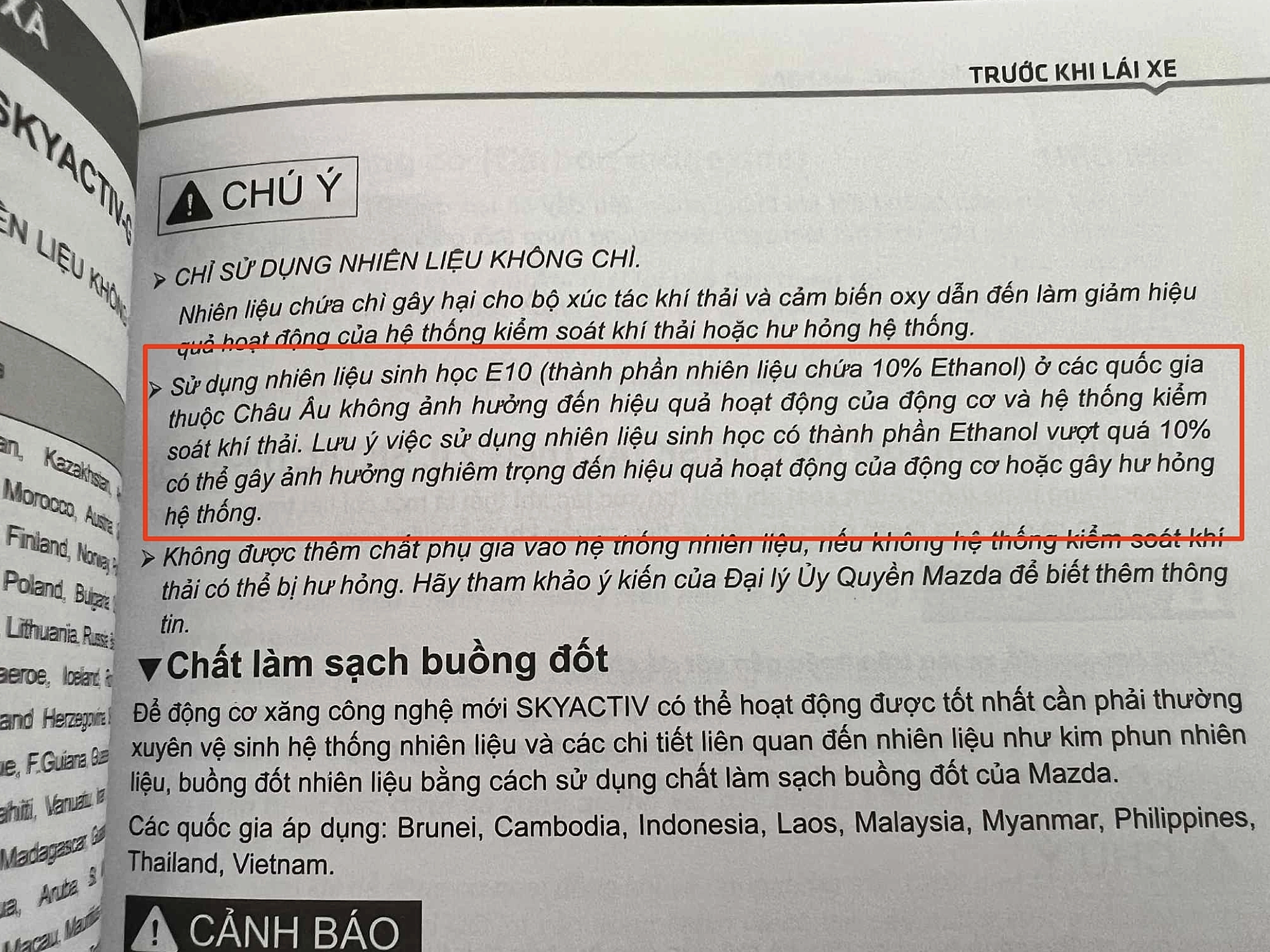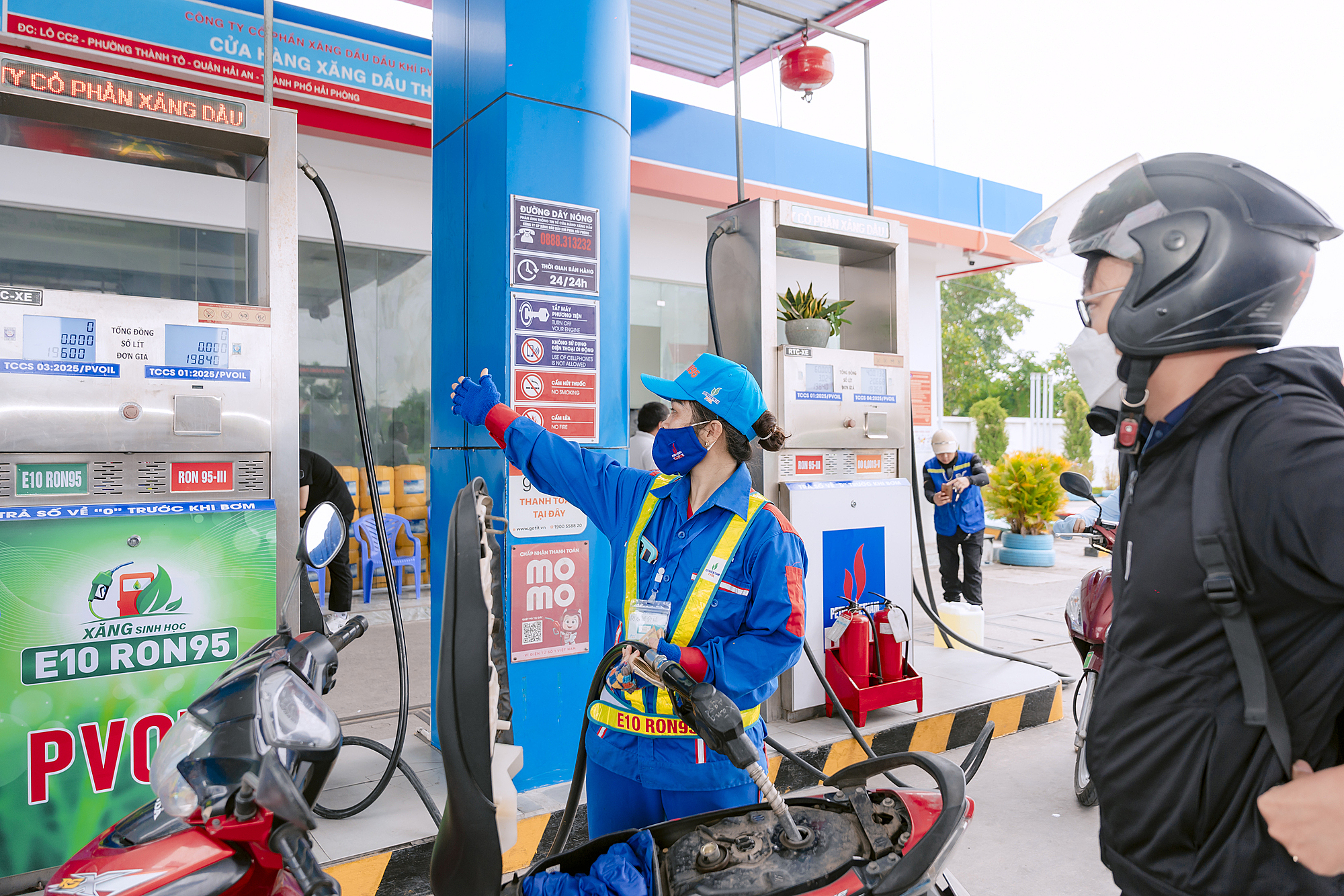The Ministry of Industry and Trade recently proposed that all traditional gasoline (RON 92, RON 95, and other mineral types) be blended with E100 to create E10 biofuel for use in gasoline engines nationwide from the beginning of next year. However, this proposal is facing mixed reactions.
The biggest concern for both users and analysts is whether E10 will affect engines, especially in older vehicles or imported luxury cars whose manufacturers recommend using RON 95 or higher.
"If a car is running normally but stalls, overheats, experiences fuel pump failure, or even catches fire after switching to E10, who will be responsible?", asked Tran Dinh Minh from Dai Mo ward, Hanoi.
Minh believes that if the government wants to promote E10, it needs to publish comprehensive scientific research and real-world testing on various vehicle types, as well as introduce a reasonable roadmap instead of immediate implementation. "If its safety and effectiveness are proven, and there are supporting policies, people will gradually accept it. If it's imposed, the risk of social backlash is very high", he said.
Some suggest that instead of making it mandatory, authorities should allow different fuel types to coexist, letting customers decide based on their needs and financial situations. "The market is the most accurate measure of product quality. If E10 is truly good, economical, and safe, people will voluntarily use it without being forced", said Mai Lan from Nghia Tan ward, Hanoi.
Ethanol fuel contains ethanol alcohol (C2H5OH), the same type found in beverages like beer and wine. It's used in internal combustion engines as a biofuel additive to regular gasoline. Ethanol fuel is typically labeled with an "E" followed by a number indicating the percentage of ethanol in the mixture by volume. For example, E85 is a blend of 85% water-free ethanol and 15% gasoline.
Most current vehicles are designed to run on E10 or lower ethanol blends. Owner's manuals or fuel caps usually recommend ethanol percentages for normal operation.
 |
Recommendation for using E10 fuel in a Japanese car's owner's manual. Photo: Ho Tan |
Recommendation for using E10 fuel in a Japanese car's owner's manual. Photo: Ho Tan
However, user concerns are also valid. For instance, the instructions above guarantee stable operation with E10 in European countries. This implies the manufacturer hasn't conducted research on E10 usage in other regions. Therefore, theoretically, the engine could be affected if the E10 source doesn't meet standards.
"If E10 is produced correctly, newer cars can use it without problems. If the ethanol content is higher, the alcohol can corrode engine components, fuel tanks, and lines, affecting engine performance", said a technical expert at an automaker.
At a seminar on 27/8, Dr. Pham Huu Tuyen presented research on E10's effectiveness from the Center for Automotive Engines and Vehicles at Hanoi University of Science and Technology. He stated that technical performance (power, fuel consumption) with E10 is comparable to or better than gasoline. E10 is suitable for most vehicles in circulation, but it might affect older, carburetor-based vehicles.
"Car and motorcycle manufacturers and importers in Vietnam should publish lists of E10-compatible models, with recommendations if necessary", he suggested.
Research by the Vietnam Association of Motorcycle Manufacturers and Hanoi University of Science and Technology also shows that most motorcycles currently in circulation in Vietnam (Honda, Yamaha, Piaggio, SYM, Suzuki) are compatible with E10 without requiring technical modifications.
However, the research team noted that fuel used for vehicles must meet emission standards. From 2017, new two-wheeled motorcycles must meet Euro III emission standards, and from 2026, Euro IV.
Therefore, they recommend that operators develop and implement a rollout plan suitable for Vietnam, using higher EURO blends, specifically E10RON95 - III and E10RON95 – IV.
From a management perspective, the Department of Innovation, Green Transition, and Industrial Promotion (Ministry of Industry and Trade) cites domestic and international studies confirming biofuel's safety. Major automakers (like Toyota, Honda, Ford) and technical organizations like SAE (Society of Automotive Engineers) affirm that E5 and E10 biofuels don't harm engines. On the contrary, E10 has a higher octane rating, improving engine efficiency and reducing knocking. This protects the engine, reduces maintenance costs, and extends vehicle lifespan.
According to the operator, Vietnamese mechanical and dynamics experts believe E10 is suitable for current vehicles in the country. The Ministry of Science and Technology has conducted tests showing that E5 and E10 don't affect engine durability if biofuel quality standards are met.
According to the Renewable Fuels Association (RFA), E10 has been used in the US for over 20 years and is recognized as safe for all modern car and motorcycle engines. A recent survey by Petrolimex also showed that Toyota and Honda in Vietnam confirmed their vehicles operate normally with E10.
 |
E10 biofuel pilot program in Hanoi, 8/2025. Photo: Xuan Hai |
E10 biofuel pilot program in Hanoi, 8/2025. Photo: Xuan Hai
The Ministry of Industry and Trade cites Thailand and the Philippines—two markets with similar vehicle fleets to Vietnam—as international examples. The average vehicle age in these countries is around 11-12 years, similar to Vietnam, meaning many vehicles date back to 2010 or earlier.
Thailand, with around 20 million passenger vehicles (about 275 per 1,000 people as of 2020), has one of the largest and most developed car markets in Southeast Asia. E10 was introduced nationwide in 2007, and by 2013, pure gasoline with an octane rating of 91 was phased out in favor of ethanol-blended gasoline. Since then, E10 has become the standard fuel.
According to the Ministry of Industry and Trade, Thailand's vehicle fleet has had no issues with E10 for decades. Even Thailand's older vehicles (from the late 1990s and early 2000s) still on the road are designed to use E10.
Automakers in Thailand actively support this policy as it aligns with national energy goals and creates a domestic market for ethanol. They agree that E10 and E20 are safe for all modern vehicles. Fuel caps on Thai cars typically have labels like "E10/E20 Biofuel OK." Many cars in Thailand have stickers inside the fuel cap indicating ethanol-blended fuel acceptance.
The Philippines, with fewer cars per capita than Vietnam (estimated at under 50 per 1,000 people), mandated E10 nationwide in 2023. The Philippine Department of Energy (DOE) previously stated that 10% ethanol-blended gasoline is safe for all engines, and users don't need to modify their vehicles to use it.
Many automakers say vehicle models from the mid-1990s onward can handle E10. For example, Toyota Motor Philippines and other members of the Chamber of Automotive Manufacturers of the Philippines, Inc. (CAMPI) guarantee that their product lines are E10-ready.
In reality, the burden falls on owners of older cars to adapt. Some mechanics recommend more frequent fuel filter changes or using additives for pre-1995 vehicles. However, no widespread issues have been reported after E10 implementation.
Motorcycles are another segment of concern because the Philippines, like Vietnam, has more of them than cars. Most motorcycles sold in the past decade have engines that can handle E10. However, ethanol blends above 10% aren't recommended for motorcycles, as smaller carburetor engines may perform poorly, and rubber parts may swell due to the ethanol. This is similar to Thailand, where most motorcycles use E10, not E20.
"Initially, some drivers worried that engine problems were caused by E10, but the actual causes were different. After a period of use without any serious malfunctions, the apprehension disappeared. Filipinos now treat E10 like regular gasoline, even forgetting it contains ethanol", the Ministry of Industry and Trade observed. The agency believes this is a positive sign for Vietnam, as consistent experience and clear information about E10's safety can dispel doubts.
Phuong Dung












